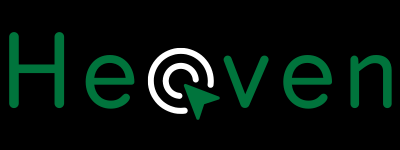In the world of UX design, understanding how users interact with your website or app is essential for crafting smooth, efficient, and intuitive experiences. While there are many ways to map out a user’s journey, two key concepts stand out: Task Flow Vs User Flow. Although they seem similar, they serve different purposes, and knowing how to apply both can significantly enhance your product’s usability.
What is Task Flow?
Task Flow is all about focusing on a specific task that a user needs to complete. It’s a step-by-step sequence of actions designed to help users reach a single goal. For example, think of a user trying to make an online purchase — Task Flow is the process that takes them from browsing a product to completing the payment.
- Goal-Oriented: Task Flow revolves around one goal or outcome, guiding the user through necessary steps. Each action leads to the next to complete that specific task.
- Linear Process: Task Flow maps out the precise, sequential steps required to complete a task. It’s very focused and simplifies the user’s journey toward a goal.
- Example: In an online shopping experience, the Task Flow might look like this:
- Browse products
- Add to cart
- Proceed to checkout
- Enter payment information
- Confirm purchase
Task Flow is crucial for optimizing individual processes. It’s ideal when you need to focus on one task or set of actions and want to make that task as simple and straightforward as possible.
What is User Flow?
User Flow, on the other hand, refers to the overall journey that a user takes as they interact with your platform. It involves multiple tasks and decision points along the way, which may vary based on how the user navigates your site. It’s broader in scope than Task Flow and aims to ensure a smooth, uninterrupted experience across the entire platform.
- Journey-Focused: Unlike Task Flow, which is goal-oriented, User Flow focuses on the entire experience and how users move from one task to another.
- Multiple Paths: A User Flow accounts for the variety of actions a user can take, providing a more flexible path toward multiple potential outcomes.
- Example: A User Flow could look something like this:
- User lands on the homepage
- Chooses a product category or navigates to deals
- Adds a product to the cart or continues shopping
- Proceeds to checkout, or decides to explore recommendations
- Completes payment or browses for more products
User Flow ensures that your platform is intuitive, guiding users through various sections with minimal friction.
Key Differences: Task Flow vs User Flow
While Task Flow and User Flow share some similarities, they differ significantly in terms of scope and complexity:
- Scope: Task Flow is narrow and focuses on achieving a specific goal, while User Flow is broad and accounts for the entire user journey.
- Complexity: Task Flow is simple and linear, making it ideal for tasks that require clear, straightforward steps. User Flow can be complex, accounting for all possible paths users might take, and needs to be adaptable.
- Focus: Task Flow is task-centric, emphasizing goal completion. User Flow is navigation-centric, ensuring the user’s movement through the platform is seamless.
Which One to Use and When?
Both Task Flow and User Flow are essential tools for creating an optimal user experience. The trick is knowing when and where to apply each:
- Use Task Flow: When optimizing specific processes or tasks, such as completing a purchase or filling out a form. This approach focuses on making each action as efficient and user-friendly as possible.
- Use User Flow: When you want to ensure smooth navigation across your entire platform. User Flow will help you identify potential roadblocks, making sure users can easily transition from one task to another, no matter where they start.
Ideally, both Task Flow and User Flow should work hand-in-hand. Start by optimizing Task Flows to streamline key actions, then use User Flows to create a cohesive, flexible experience across your entire platform.
How to Create Task Flow and User Flow:
Follow these simple steps:
- Task Flow:
- Identify the Task: Start by selecting a specific task (e.g., purchasing, registering, subscribing).
- Map the Steps: Break the task into smaller, easy-to-follow actions that lead to a successful outcome.
- Simplify the Process: Ensure the process is as direct and clear as possible, avoiding any unnecessary steps.
- User Flow:
- Define Entry Points: Identify the primary paths users can take (homepage, landing page, search, etc.).
- Create Pathways: Map out all possible routes users could follow, considering decision points and alternate actions.
- Test and Refine: Ensure users can navigate easily from one task to the next, with no confusing or unnecessary barriers.
These flows are integral to creating an easy-to-navigate site that drives conversions and customer satisfaction.
As your platform evolves and more users engage with it, it’s essential to continuously monitor and refine these flows. With tools like Nudge, you can not only visualize the user journey more effectively but also optimize it in real-time, making data-driven adjustments to increase engagement and conversions.
Conclusion
If you’re looking to enhance your website’s user experience and streamline your task and user flows, consider exploring tools like Nudge. Nudge offers intuitive features to help map user journeys and optimize interactions for better engagement and conversion rates.
Book a demo today to see how Nudge can help your business grow by providing tailored experiences for your users.











